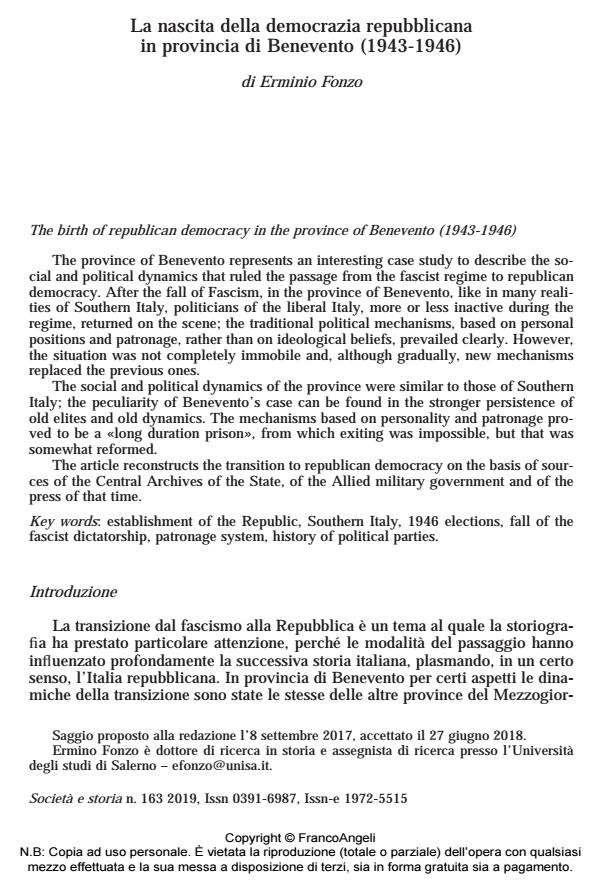The birth of republican democracy in the province of Benevento (1943-1946)
Journal title SOCIETÀ E STORIA
Author/s Erminio Fonzo
Publishing Year 2019 Issue 2019/163
Language Italian Pages 32 P. 91-122 File size 107 KB
DOI 10.3280/SS2019-163005
DOI is like a bar code for intellectual property: to have more infomation
click here
Below, you can see the article first page
If you want to buy this article in PDF format, you can do it, following the instructions to buy download credits

FrancoAngeli is member of Publishers International Linking Association, Inc (PILA), a not-for-profit association which run the CrossRef service enabling links to and from online scholarly content.
The province of Benevento represents an interesting case study to describe the social and political dynamics that ruled the passage from the fascist regime to republican democracy. After the fall of Fascism, in the province of Benevento, like in many realities of Southern Italy, politicians of the liberal Italy, more or less inactive during the regime, returned on the scene; the traditional political mechanisms, based on personal positions and patronage, rather than on ideological beliefs, prevailed clearly. However, the situation was not completely immobile and, although gradually, new mechanisms replaced the previous ones. The social and political dynamics of the province were similar to those of Southern Italy; the peculiarity of Benevento’s case can be found in the stronger persistence of old elites and old dynamics. The mechanisms based on personality and patronage proved to be a «long duration prison», from which exiting was impossible, but that was somewhat reformed. The article reconstructs the transition to republican democracy on the basis of sources of the Central Archives of the State, of the Allied military government and of the press of that time.
Keywords: Establishment of the Republic, Southern Italy, 1946 elections, fall of the fascist dictatorship, patronage system, history of political parties.
- The market of infidelity—the effect of party switching on lawmaking productivity: evidence from Italy Umberto Nizza, in European Journal of Law and Economics /2025
DOI: 10.1007/s10657-025-09849-9
Erminio Fonzo, La nascita della democrazia repubblicana in provincia di Benevento (1943-1946) in "SOCIETÀ E STORIA " 163/2019, pp 91-122, DOI: 10.3280/SS2019-163005